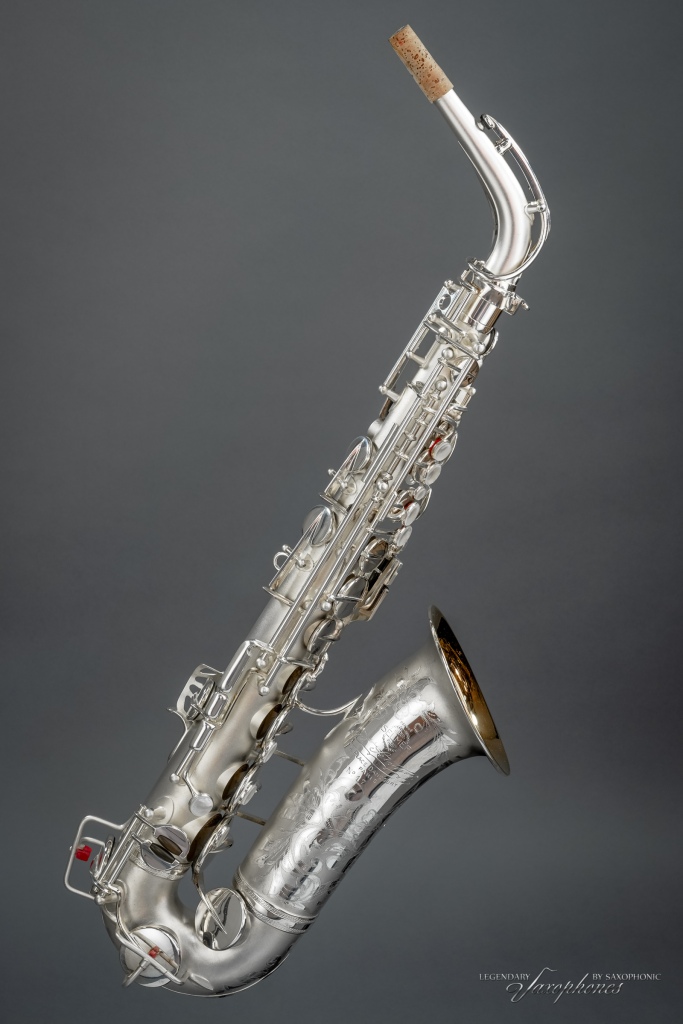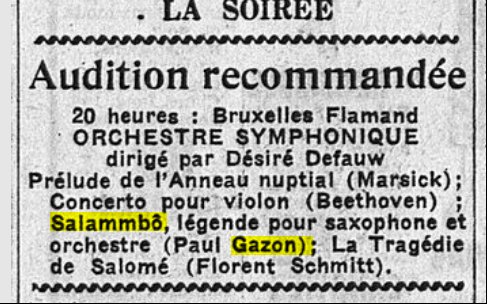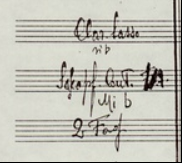
I’ve been researching possible explanations to why Selmer made a handful of high pitched saxophones in 1932. For background on the saxophone, check out the initial post here, and the response. Just to reiterate, Selmer has no history of manufacturing high pitched woodwinds, based on the information about this saxophone Selmer only manufactured 10 high pitched saxophones in its entire history. Why?
I researched the musical landscape of France in the early thirties. Saxophones were on the radio, from Debussy’s Rhapsodie to the latest Rudy Wiedoeft saxophone solo. Marcel Mule with the Garde Républicaine quartet debuted new works written for the saxophone quartet. And a handful of orchestral works scored for the saxophone premiered. The following works are pieces I believe were written for standard pitched saxophones.
Arthur Honegger: Mouvement Symphonique no. 3. Mouvement Symphonique no. 3 debuted in 1933 in Berlin. At this point, Honegger has a history of writing for saxophones, in this database his earliest work with the saxophone is his 1922 ballet, Skating Rink which includes the alto saxophone in the score. With this history of writing for saxophone, it’s unlikely he would write for a high pitched saxophone.
Marius-François Gaillard: La Passion Noire. Gaillard is most known today as a pianist and one of the great interpreters of Debussy’s piano music. His reputation as a composer is not as well known, but a few of his scores are still available to purchase. His 1932 work, La Passion Noire is a Cantata written for choir, orchestra–including a saxophone quartet, and ondes martenot. With a quartet of saxophones, it’s unlikely this is the work for the high pitched saxophones. I also read up on the tuning systems of ondes martenot and they were tuned to standard pitch, A=440. No need for a new instrument to play with the ondes martenot.

I took a picture of the next possible work, Salammbo, legende pour saxophone et orchestre by Paul Gazon. I can’t find anything about this work, the composer, the conductor, or the saxophonist. The Bruxelles Flamand Orchestre Symphonque performed it, but I can’t even find history on the ensemble. The earliest Brussels orchestra I could find was the Brussels Philharmonic which formed in 1935. This piece is a mystery.
The more I researched, I realized that maybe the saxophone wasn’t written for a specific piece, maybe it was for an event. The International Society for Contemporary Music, or the ISCM began in 1923 as a showcase for new music across Europe. In the early years, the ISCM hosted a conference rotating between major European cities like Amsterdam where the 1933 festival was held. On the program were two works that include the saxophone, William Walton’s Belshazzar’s Feast and Geoffredo Petrassi’s Partita for orchestra.
Belshazzar’s Feast was Walton’s second work presented at an ISCM Festival. In 1928, his work, Façade, was performed at the ISCM festival in Siena. Façade is a work Walton tinkered with for 30 years, but the first published score consists of six players including the alto saxophone, the hyperlink above will take you to an early recording of this piece. Walton had a history writing for the saxophone. Theses two works, Belshazzar’s Feast and Façade couldn’t be more different. Belshazzar’s Feast was written for choir, baritone solo, orchestra, two brass bands, and organ.
I could not find information where this performance took place or what orchestra performed these works. The use of brass bands also introduces the possibility of high pitched instruments. One area I haven’t talked about is the complicated tuning of organs. Every organ has its own tuning system, there are many articles on tuning of organs, and unless we know exactly what organ was used in this performance or tuning systems of organs in Amsterdam, it’s hard to pin a precise pitch used for this performance.[1] For a more entertaining look at the complicated nature of organ tuning, check out the popular YouTube channel, Look Mom No Computer where he purchases an entire church organ built into a house, disassembles the organ, and reassembles it in his music museum.
I couldn’t find any more performances of Belshazzar’s Feast outside of Great Britain in the 1930s. I don’t know why he included the saxophone in the work. Perhaps he was influenced by Ralph Vaughn-Williams ballet, Job: A Masque for Dancing which made it onto the 1931 ISCM festival in Oxford. Both are inspired by Old Testament stories, both have the organ, and they both feature the alto saxophone. Fun fact, Gershwin’s An American in Paris was also featured in the 1931 ISCM festival.
The next piece on the ISCM 1933 program that featured the saxophone was the Italian composer, Goffredo Petrassi’s Partita for orchestra. Petrassi was considered a neo-classicist in the style of Hindemith and Stravinsky, and his Partita is a good example of his early style. The orchestra includes the alto and soprano saxophone. The hyperlink above is an early recording from the orchestra at La Scala. Here is a more recent recording, the saxophones are quite bright in this recording, they even sound sharp to my ears.
I found his hand written score in the Ricordi archives. For the Partita, he lists the following saxophones in the score.

At first I was slightly confused at the cont. listing for the second saxophone. Just doing a rough translation, I think its an abbreviation for contralto. I’m not sure is if Petrassi was familiar with saxophone tuning in the 1930s. A later score of his 1934 Concerto for Orchestra lists the following:

It almost looks like Fa is crossed out and replaced with Mib. What pitch was initially used in the Partita? I can’t tell yet without looking at more of his hand written score.
Before the ISCM festival, the Partita was awarded the grand prize from the International Federation of Concerts in May, 1933.[2] The International Federation of Concerts was formed in 1929 to address issues in music copyright laws across Europe. In October 1933, the Paris based Lamoureux Orchestra, under the baton of Bernardino Molinari programed a concert of new Italian works, including Partita and Respighi’s Pines of Rome.
Back to the original question, was the Selmer AD saxophone made for a specific work? Two models were sent to the Netherlands, and two works featuring the saxophone (alto and soprano) were on the ISCM program in Amsterdam. Three AD saxophones stayed in France, and the Partita was performed in France at least once more that year if not more. This is just a theory. We may never know why Selmer made high pitched saxophones.
Another question hit me as I am researching this, how many AD saxophones still exist? Is this saxophone from the Netherlands the only remaining model? I searched for Selmer Cigar Cutters for sale, and I found this one in Great Britain, the model number 17008. This is just one number removed from the AD saxophone, 17007. You can see the difference in quality of silver plating and engraving. How many of these saxophones were destroyed in the war? Unless we can find another AD model, this one might be it.
[1] Mendel, Arthur. “Pitch in Western Music since 1500. A Re-Examination.” Acta Musicologica, vol. 50, no. 1/2, 1978, pp. 1–328. JSTOR, https://doi.org/10.2307/932288. Accessed 23 June 2023.
[2] Le congres de la Federation internationale des concerts.” Le Journal, 31 May 1933, pg. 6/10. Accessed 23 June 2023.
[3] “Nocturne et Serenade, de H. Woollett.–Un concert de musique italienne. –Le Madarin merveilleux, de. M. Bela Bartok.” La Liberté, October 31, 1933, pg. 4/6. Accessed 23 June 2023.
One thought on “Selmer high pitched alto saxophone? Possible answers to why this exists…”